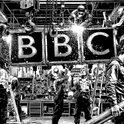After the 2015 general election and the 2016 European Union referendum, many people are sceptical of opinion polls.
That scepticism is warranted. In 2015, the polls got the gap between Labour and the Conservatives wrong by six and a half percentage points. Last year, an average of referendum polls put Remain two points ahead when it finished two points behind.
Neither polling miss can be explained away by invoking the "margin of error,” a number which summarises how confident we can be given the number of people in any given poll. For a poll with one thousand respondents, the margin of error is plus or minus three percentage points. If the poll is a random sample of the population, then most polling misses should land within this range—and should fall either side of the true value. The polling misses in 2015 and 2016 weren't like this. Almost all polling companies erred in the same way, underestimating the Conservatives and underestimating Leave.
Underestimating the Conservative party risks becoming a chronic feature of British polling. The last election in which the polling industry as a whole overestimated the Conservative share of the vote was 1983. In elections since 1979, the Conservatives have on average finished one point ahead of where the pre-election polls put them, whilst Labour have finished one and a half points behind.
This doesn't mean that the same thing will happen in 2017. Polling companies have every incentive to revise their methods so as to produce more accurate results. Those methodological changes are now being road-tested three years earlier than most expected. It's possible that those changes will lead to pollsters over, rather than underestimating the Conservatives. Of that I am sceptical. After the debacle of 1992, when pollsters dramatically underestimated the Conservative share of the vote, they introduced multiple changes to avoid this happening again. They did better in 1997, but still underestimated it. The big difference between 1992 and 1997 is that no one cares much about the accuracy of polls in a landslide.
You don't need to engage in magical thinking to be cautious when it comes to trusting the polls—but caution doesn't warrant the attitude that “anything may yet happen,” or that all results are equally likely. You may believe that the polls will be off by three or four percentage points in respect of each party. If you push it, you can argue that errors like this will point in your preferred direction. But you cannot ignore the fact that the polls currently give the Conservative party a lead greater than any polling miss in history.
We can think of polls like early modern timepieces: prone to inaccuracies much greater than their manufacturers would pretend, and liable also to err in predictable ways, speeding up in the morning and slowing down at night. Those timepieces may have been poor, but they were not so poor as to mistake day for night. British polls might not be great, but when they say that the Conservatives are ahead by sixteen to twenty-three percentage points, it's probably not a close contest.
Should you believe the polls?
The Conservative lead is greater than any polling miss in history
May 03, 2017

Prime Minister Theresa May walks during a campaign stop in Mevagissey, Cornwall ©DYLAN MARTINEZ/WPA Rota/Press Association Images











